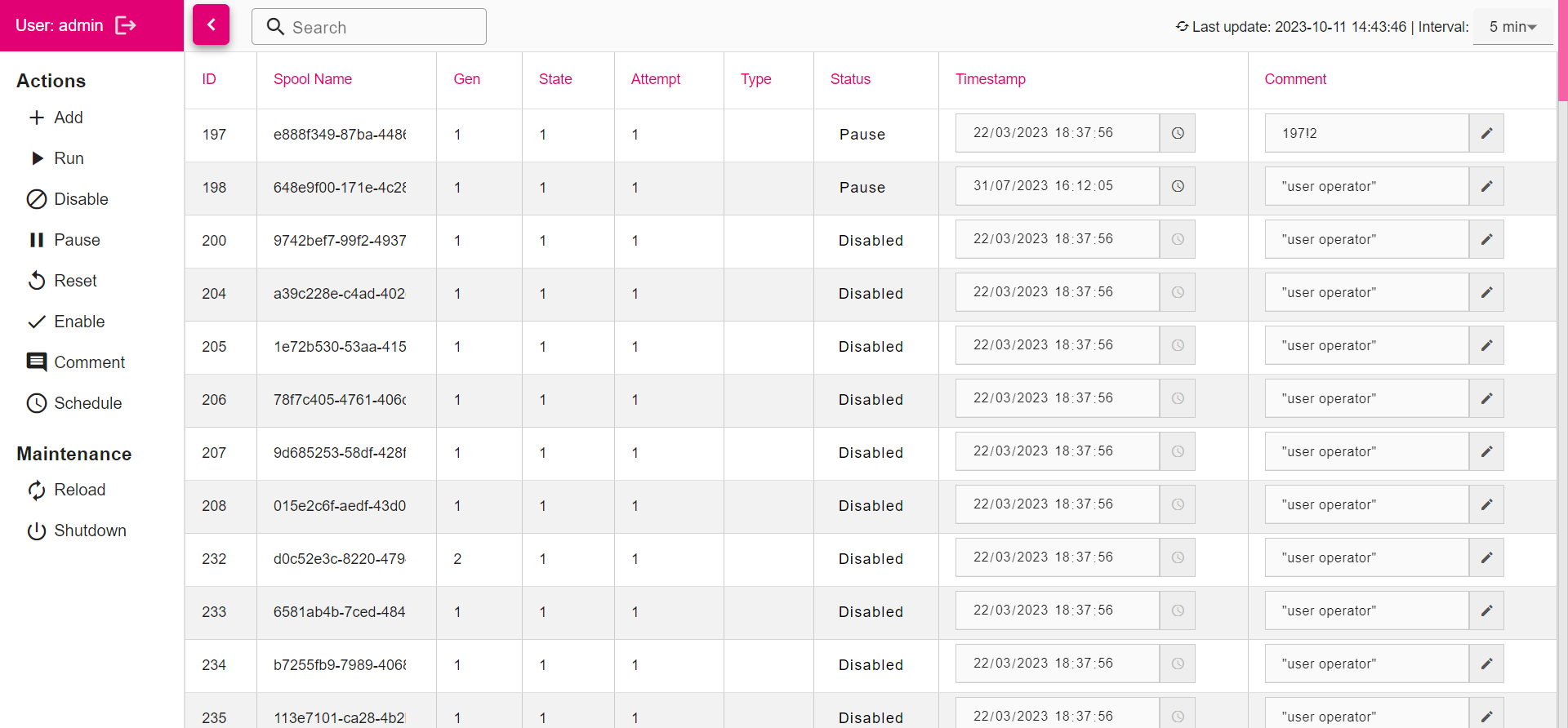The Scheduler is a process automation engine for the ImageMaster back end, which controls bulk import and export processes. A workflow is defined via a configuration file and processed by the Scheduler. During the runtime of a workflow, jobs are generated, which handle different processing steps via scripts and tools1 that must be accessible in the Batch Processing environment.
The Scheduler provides a web-based monitoring interface based on REST (see Monitoring Web Interface below) and a command line monitoring tool (see chapter Command Line Monitor), both of which provide status information with live updates on the current job states, which are tracked in a database (see chapter Workflow transitions and job status).
Based on the configuration options (see chapter Configuration), the web interface URLs are of the following structure:
-
https://<MonitoringHost>:<MonitoringPort>/monitor/
-
https://<MonitoringHost>:<MonitoringPort>/metrics/
Whereas the monitoring interface is the main control interface, the metrics provide low-level system information for analysis and advanced troubleshooting.
Starting from ImageMaster version 9.13.2.1 JWT authenticator is supported. In the absence of an authentication token, the panel displays a login and password field for user authentication. Once successfully authorized, users will gain access to a range of actions, including those related to processes, configuration, rebooting, and server shutdown. Authorized users can log out from their account.
The meanings of the different output values of the monitoring web interface are summarized below:
|
Output Parameter |
Description |
|---|---|
|
ID |
Internal ID based on a sequential counter |
|
Spoolname |
Spool name that reflects a process |
|
Generation |
Generation number that reflects a set of files and data that are processed together |
|
State |
Number of the process phase |
|
Attempt |
An attempt number |
|
Type |
Process phase, e.g. “Initialize” or “Archiving” (also see Scheduler – workflow transitions) |
|
Status |
Job state, e.g. “Waiting”, “Error” or “Pause” (also see Scheduler – job states), or any newly introduced status like: “Disabled” (supported since coldscheduler assembly 9.11.1.1) |
|
Timestamp |
Date and time when the process phase has been triggered Field offers the possibility to schedule the process. |
|
Comment |
Description of the spool |
|
Table 78: Monitoring information |
|
